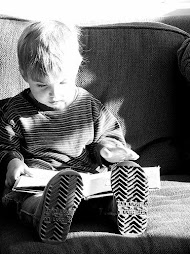
Greg Kenton is obessed with money, and has been ever since he learned to count. While still in preschool, he started charging his older brothers to do their chores for them at three and five and ten cents per chore. As he got older, he expanded to shining his parents’ shoes, mowing his neighbors’ lawns, selling lemonade on hot summer days, and even selling small toys at school, with visions in his young head of one day becoming a millionaire. At the end of his fifth grade year, Greg realizes that most kids in his school have at least an extra quarter or two everyday at lunch and comes up with his best idea yet – producing and selling his own line of miniature comic books for just twenty-five cents each. But as he launches this new business at the start of his sixth grade year, his long-time nemesis and neighbor, Maura, hones in on his business with a miniature book of her own for sale. Conflict between these two entrepreneurs escalates and draws the attention of the principle, who bans the comics from school. Greg and Maura then find themselves teamed up as business and creative partners as they take their argument to the school committee and try to get their comic business, well, back in business. As they learn to appreciate each other’s talents, Greg’s obsession with money lessens as his picture of success begins to change. Clements does a marvelous job crafting adult characters who are neither one-dimensionally mean or conveniently dumb, and does a kind service to teachers who truly care about their students but sometimes lose control a little. Kids will enjoy a character their own age who is as inventive and resourceful as Greg.
"Without belaboring his point, Clements takes on product placement in schools and the need for wealth. "Most people can only use one bathroom at a time," says Greg's math teacher, Mr. Z. Greg gets the message; middle-grade readers may ignore it in favor of the delightful spectacle of Greg's ultimate economic success, a pleasing result for the effort this up-and-coming young businessman puts into his work. Clements weaves intriguing information about comic book illustration into this entertaining, smoothly written story. Selznick's accompanying black-and-white drawings have the appearance of sketches Greg might have made himself. This hits the jackpot.” - Kirkus Reviews
"Along with providing a fast-paced and humorous story line, the author examines concepts of true wealth, teamwork, community mindedness, and the value of creative expression. Selznick's pencil sketches add comic touches throughout.” - School Library Journal












